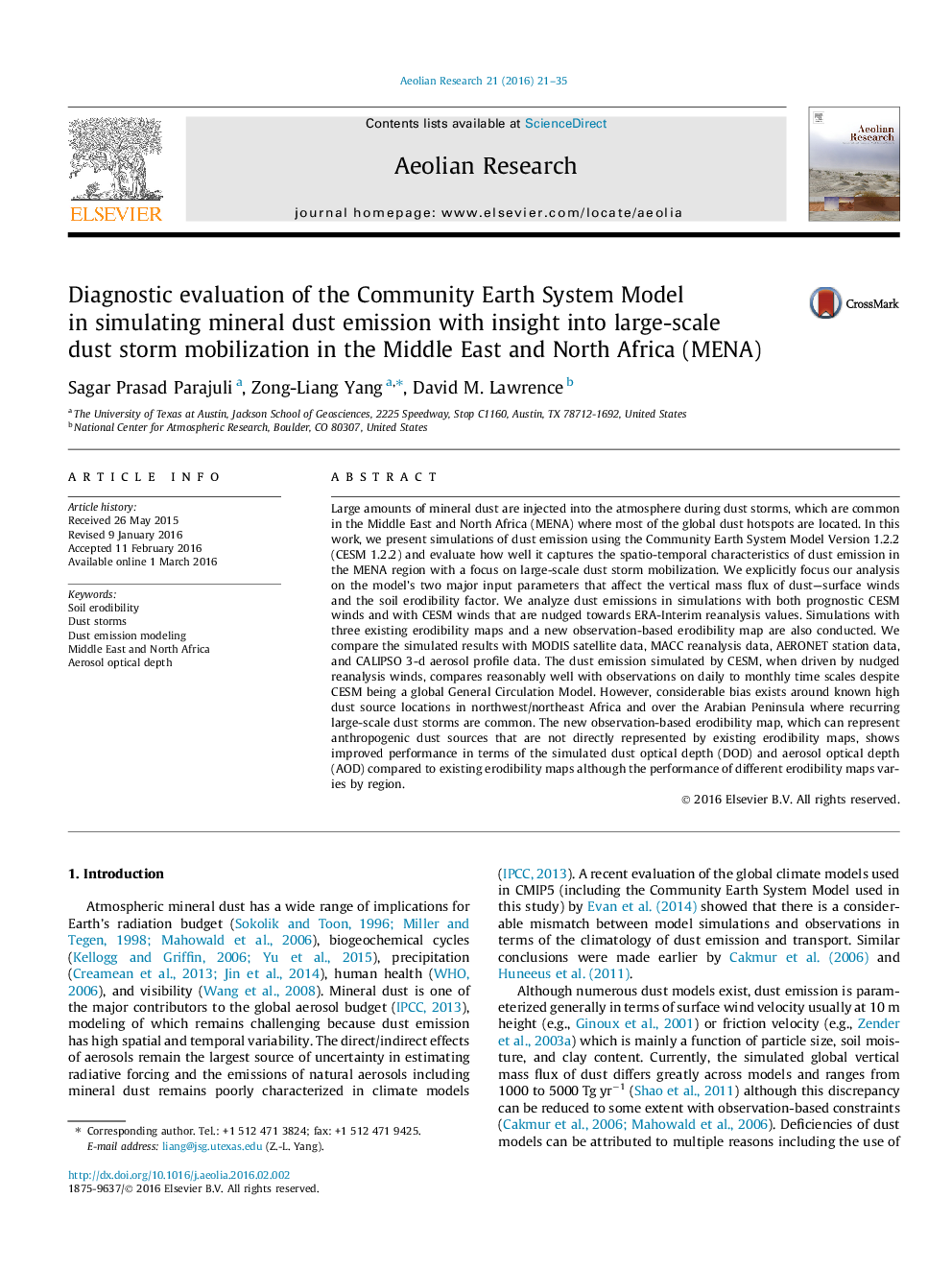| کد مقاله | کد نشریه | سال انتشار | مقاله انگلیسی | نسخه تمام متن |
|---|---|---|---|---|
| 6426273 | 1634107 | 2016 | 15 صفحه PDF | دانلود رایگان |
عنوان انگلیسی مقاله ISI
Diagnostic evaluation of the Community Earth System Model in simulating mineral dust emission with insight into large-scale dust storm mobilization in the Middle East and North Africa (MENA)
دانلود مقاله + سفارش ترجمه
دانلود مقاله ISI انگلیسی
رایگان برای ایرانیان
کلمات کلیدی
موضوعات مرتبط
مهندسی و علوم پایه
علوم زمین و سیارات
علم هواشناسی
پیش نمایش صفحه اول مقاله

چکیده انگلیسی
Large amounts of mineral dust are injected into the atmosphere during dust storms, which are common in the Middle East and North Africa (MENA) where most of the global dust hotspots are located. In this work, we present simulations of dust emission using the Community Earth System Model Version 1.2.2 (CESM 1.2.2) and evaluate how well it captures the spatio-temporal characteristics of dust emission in the MENA region with a focus on large-scale dust storm mobilization. We explicitly focus our analysis on the model's two major input parameters that affect the vertical mass flux of dust-surface winds and the soil erodibility factor. We analyze dust emissions in simulations with both prognostic CESM winds and with CESM winds that are nudged towards ERA-Interim reanalysis values. Simulations with three existing erodibility maps and a new observation-based erodibility map are also conducted. We compare the simulated results with MODIS satellite data, MACC reanalysis data, AERONET station data, and CALIPSO 3-d aerosol profile data. The dust emission simulated by CESM, when driven by nudged reanalysis winds, compares reasonably well with observations on daily to monthly time scales despite CESM being a global General Circulation Model. However, considerable bias exists around known high dust source locations in northwest/northeast Africa and over the Arabian Peninsula where recurring large-scale dust storms are common. The new observation-based erodibility map, which can represent anthropogenic dust sources that are not directly represented by existing erodibility maps, shows improved performance in terms of the simulated dust optical depth (DOD) and aerosol optical depth (AOD) compared to existing erodibility maps although the performance of different erodibility maps varies by region.
ناشر
Database: Elsevier - ScienceDirect (ساینس دایرکت)
Journal: Aeolian Research - Volume 21, June 2016, Pages 21-35
Journal: Aeolian Research - Volume 21, June 2016, Pages 21-35
نویسندگان
Sagar Prasad Parajuli, Zong-Liang Yang, David M. Lawrence,